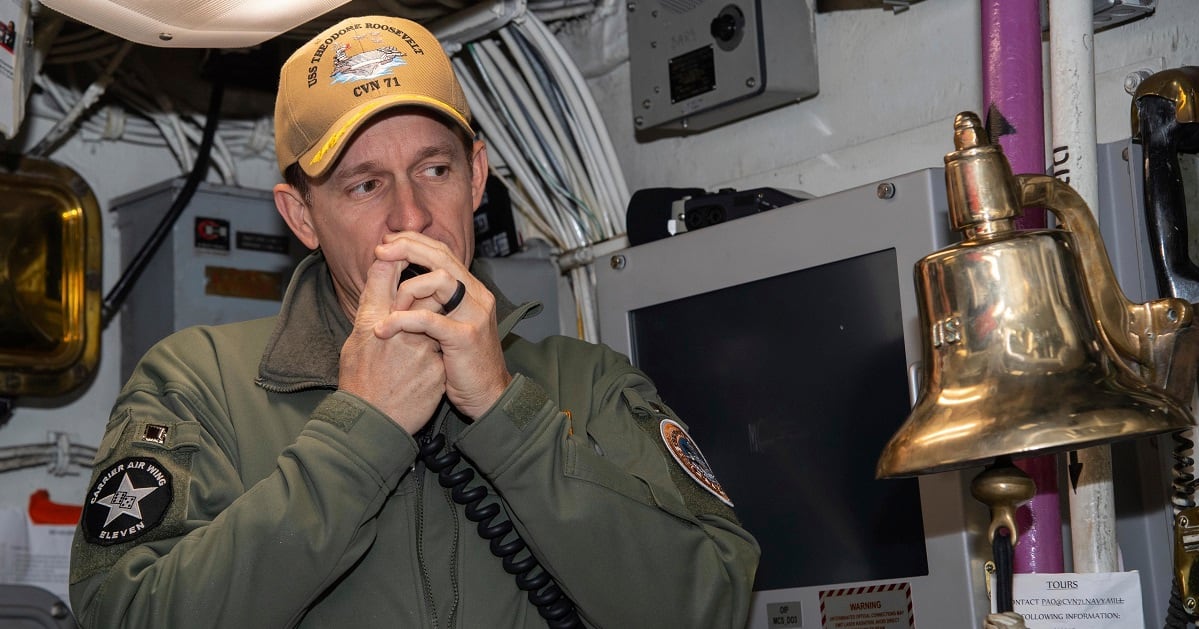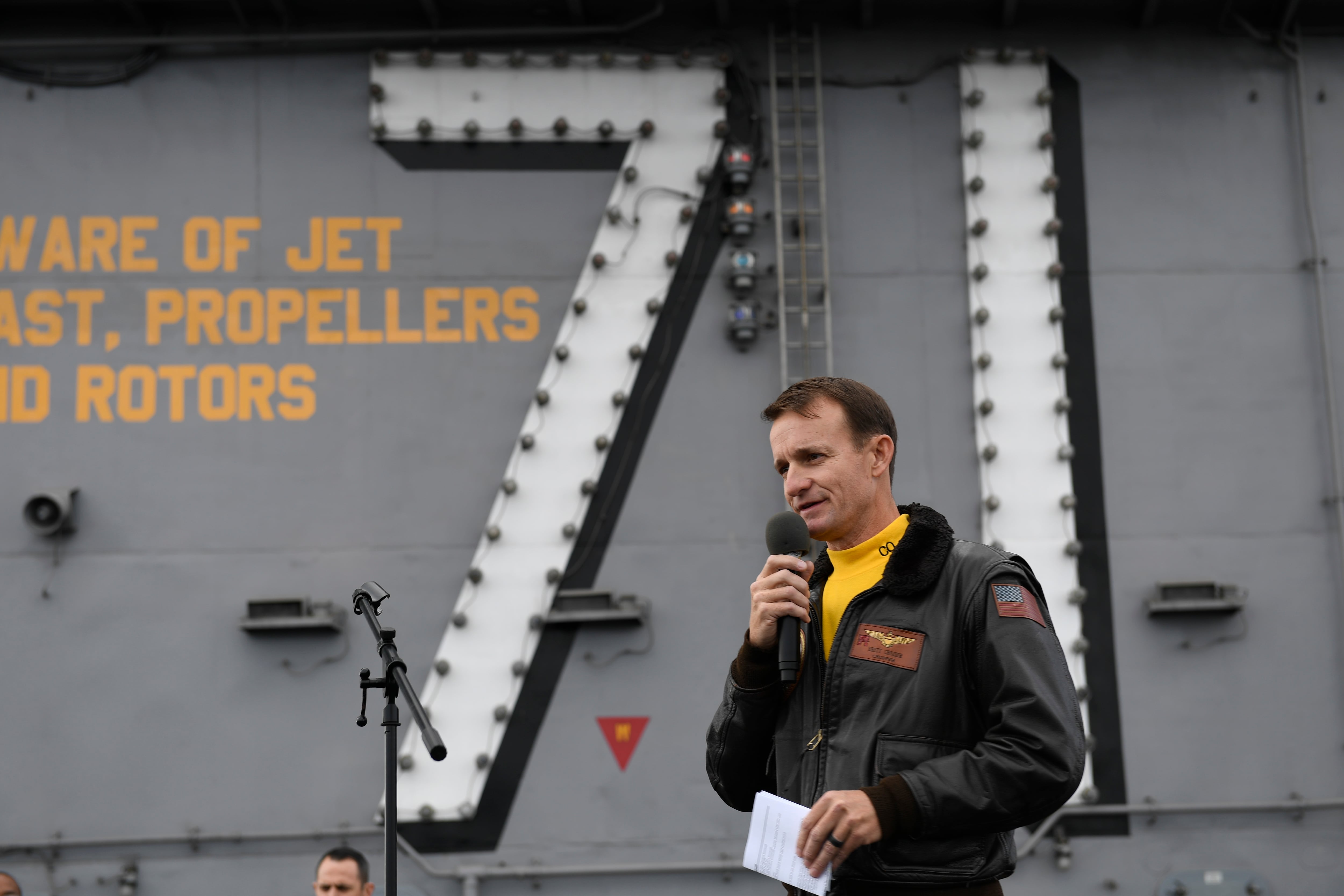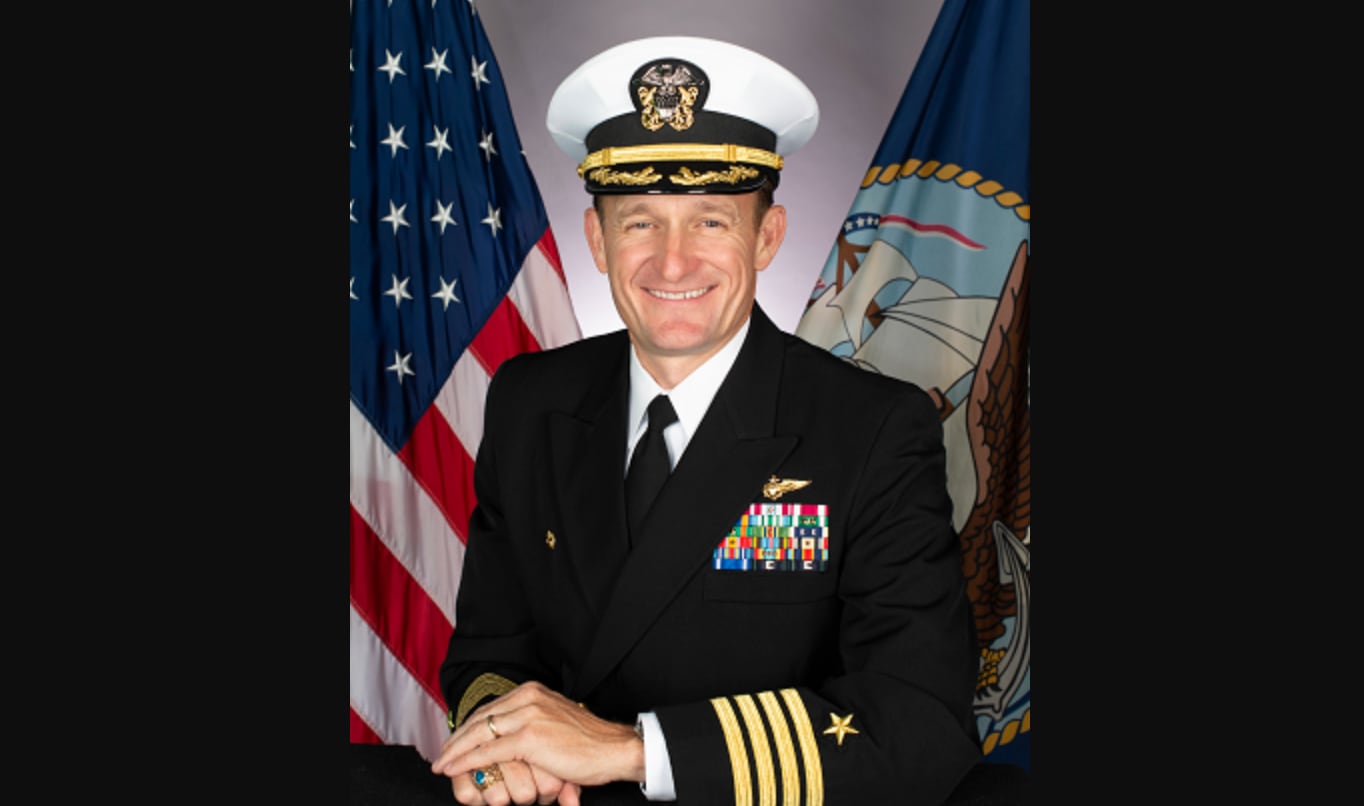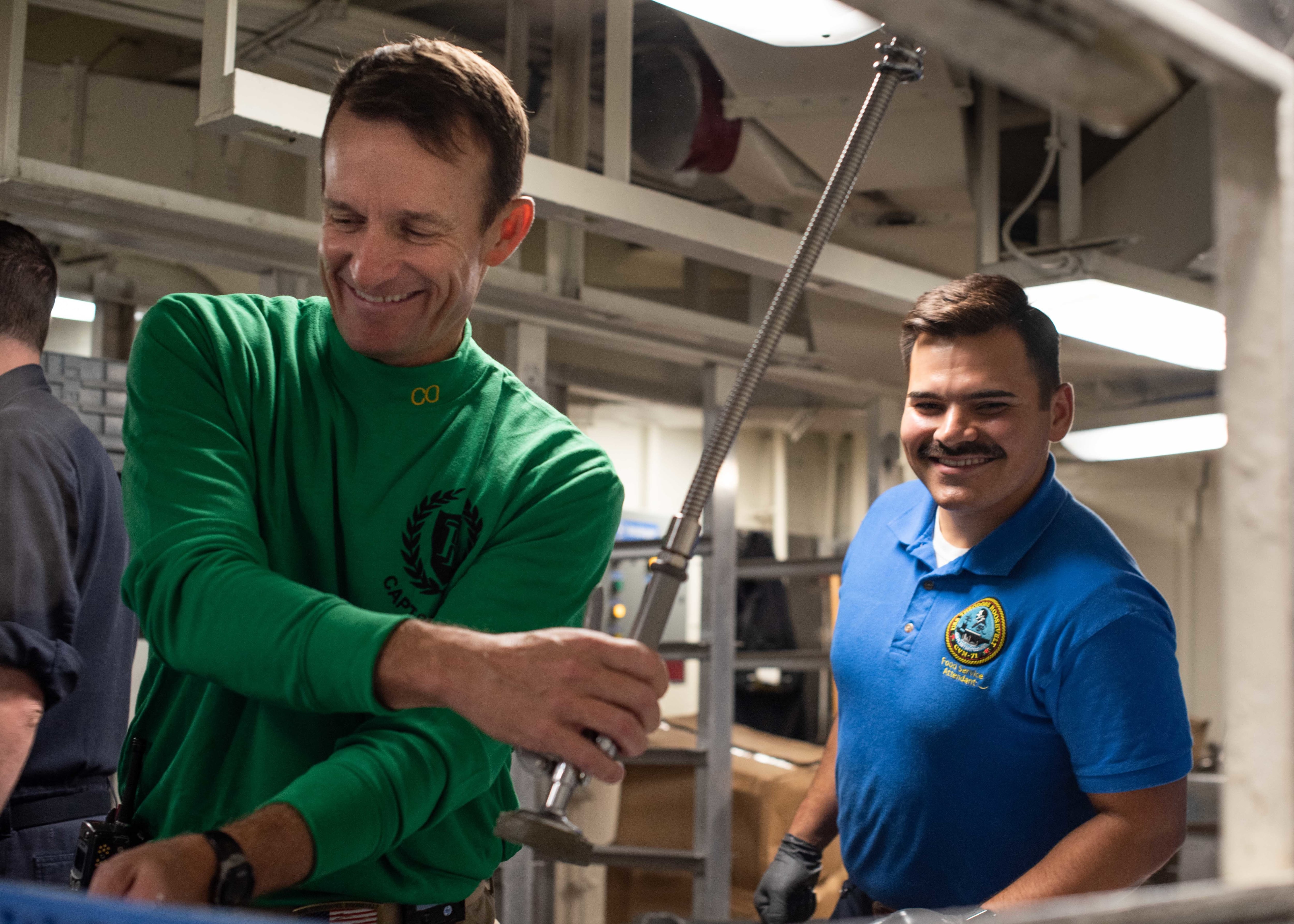Capt. Brett Crozier, who commanded the aircraft carrier Theodore Roosevelt during its harrowing COVID cruise in the early months of the pandemic, is retiring next month after 30 years of service, Navy officials confirmed.
Crozier flew his final flight in a F/A-18F Super Hornet with Strike Fighter Squadron 154 on Feb. 2, officials said.
While Crozier’s career spanned decades of service, he will be forever associated with his time leading TR.
The COVID-19 outbreak aboard “The Big Stick” that began in March 2020 while the carrier was in the West Pacific eventually infected roughly a quarter of the sailors onboard and forced an emergency detour into Guam.
Crozier was relieved a few days after a March 30 email he sent up the chain of command was leaked. In that missive, which he went to a lengthy list of recipients, he implored Navy leadership to do more to get his sailors off the ship.
RELATED

A viral video showed scores of TR sailors chanting Crozier’s name as he departed the ship for the last time.
Acting Navy Secretary Thomas Modly, who slammed Crozier during a personal address to the TR’s crew shortly after Crozier’s departure, resigned when video of his remarks was also leaked.
Crozier could not be reached for comment for this story, but he later told Navy investigators that he sent the email because he feared for the safety of his crew and was aware of how the move might impact his career.
The Navy conducted a deeper dive into the circumstances behind Crozier’s firing and announced in the summer of 2020 that Crozier would not be reinstated as the carrier’s commander.
RELATED

Speaking at a press conference in June, Chief of Naval Operations Adm. Mike Gilday said that while the email and the leak were the genesis of the Navy’s investigation into Crozier’s command, that deeper probe validated the move.
“Had I known then what I know today … if Capt. Crozier was still in command today, I would have relieved him,” Gilday said at the time.
Gilday and other Navy leaders argued that the wheels were already in motion to get sailors off the carrier when Crozier sent the email that leaked.
In the 72 hours before Crozier sent his now-infamous email, he did not plan for or egress sailors off the ship and onto Naval Base Guam fast enough, the investigating officer, Adm. Robert Burke, wrote.
Crozier was too focused on getting his sailors into hotel rooms that were not yet available, instead of sending them off the ship and into base facilities, like gyms that provided each sailor 72 square-feet of distance, according to the investigation and Gilday.
RELATED

While the investigation chided TR leadership for not following social distancing protocols as the carrier headed for Guam, Capt. Daniel Keeler, the ship’s executive officer, later told investigators that such distance isn’t really possible on a carrier.
“With 4,800 onboard, there was no way to draw a 6-foot circle around every Sailor and still operate,” he said in his statement.
Crozier’s April 2 firing was like “dropping a nuclear bomb in the middle of an ongoing crisis,” Keeler said. “His relief took over everything for two or three days. It was difficult to focus on the real problem— fighting a COVID outbreak on a CVN.”
Several lawmakers came to Crozier’s defense following the investigation’s release, with Democratic Sens. Richard Blumenthal and Chris Van Hollen questioning whether Crozier was getting a fair shake.
“When the COVID-19 pandemic was beginning to take hold, there was no formal training in place and the military was responding — like the rest of the world — without clearly defined safety precautions,” the senators said. “The Navy’s decision now seems to apply a retroactive standard and after-the-fact procedures and practices to justify Captain Crozier’s firing.”
Geoff is the managing editor of Military Times, but he still loves writing stories. He covered Iraq and Afghanistan extensively and was a reporter at the Chicago Tribune. He welcomes any and all kinds of tips at geoffz@militarytimes.com.





